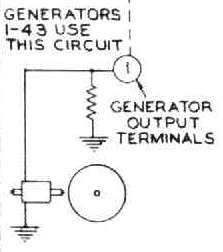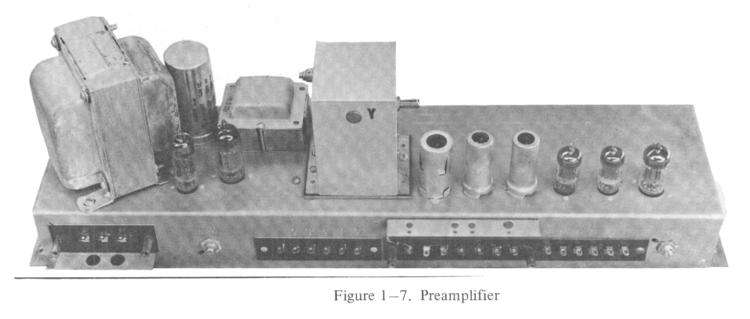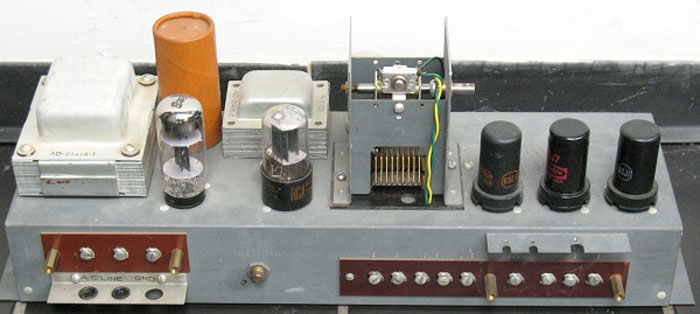General Description
From Service Manual:
Associated with each tone wheel is a magnetized rod about 1/2 inch in diameter and 4 inches in length, with a coil of wire wound near one end. The tip of the magnet at the coil end is ground to a sharp edge and mounted near the edge of the tone wheel. Each time a tooth passes this rod it causes a change in the magnetic field which induces a small voltage in the coil, the frequency being determined by the number of teeth and the wheel speed.

Small coils are used on the higher frequency magnets and larger coils on the lower frequencies. It is found that large pole pieces are needed on the low frequency magnets to give good frequency output, but it is necessary to use smaller ones on the high frequencies to prevent excessive iron losses.
Some of the coils have copper rings mounted on them for the purpose of reducing harmonics. As these are used only on fairly low frequency coils, the eddy current loss in such a ring is small for the fundamental frequency of that coil, but high for it’s harmonics. This has the effect of reducing the relative intensities of any harmonics which may be produced by irregularities in the tone wheels. The wheels are cut so to give as nearly a sine wave as possible, but the generated voltage seldom reaches that ideal condition, since even a change in the air gap will change the waveform. The tip of each magnet, as well as the edge of each tone wheel, is coated with lacquer to prevent corrosion, for, should oxidation set in, the change in tooth shape would introduce irregular frequencies.
If your organ generator indicates it has a bad or dead note, you may suspect a Pick up Coil. Be sure to eliminate other possibilities.
- Tone Wheels
- Generator Filters
- Broken Wires or Connections
Troubleshooting
Checking out the Pick-up coil.
 |  |  |
These coils are connected to ground on one end, and then to a filter or the terminal strip on the other. This means that if the coil is operating properly, there is a measurable resistance from the signal side to ground. Since there are many different sizes of Pick-Up coils, the resistance will vary. At least you should not read an “open” indicating the coil is open, or a dead short indicating the coil is damaged.

The tone wheel is adjusted in the factory and attempts to re-adjust are usually not necessary. In fact, they can be damaged in doing so.
- The magnet could be accidently pushed into the spinning tone wheel.
- Twisting the magnet when adjusting can damage the pick-up coil.
The reason for adjusting the pick-up coil and magnet would usually be for a volume adjustment. For example if one note was real loud it might be that the magnet somehow got pushed in and so it would need to be pulled out slightly. Any movement is very slight. Also, as stated on the generator page, the gap between the magnet and the wheel not only changes the volume but will change the timbre of the tone.
The good news is that these pick-ups practically never fail. They are very well protected inside the generator.
The bad news is, just like the tone wheels, if you have a bad pick-up, there is in reality no repair here. These pick-ups are sandwiched into the generator as it is put together. Also, there are no parts you can order. If you wanted to disassemble a generator and had another generator to get parts from, it would be simpler to swap generators.
Another possibility is a Trek II Product that replaces a dead note electronically.






1 thought on “Generator Pick-Ups”
Many years ago the Hammond technician who I went to, Joe More owner of ABC Electronic Organ and Sound Service in Whittier CA developed a tool that could remove a dead pickup. He was very proud of that accomplishment. Unfortunately Joe passed away at age 95 and his invention as far as I know lost with his passing.
Thought you might find this interesting.
Comments are closed.